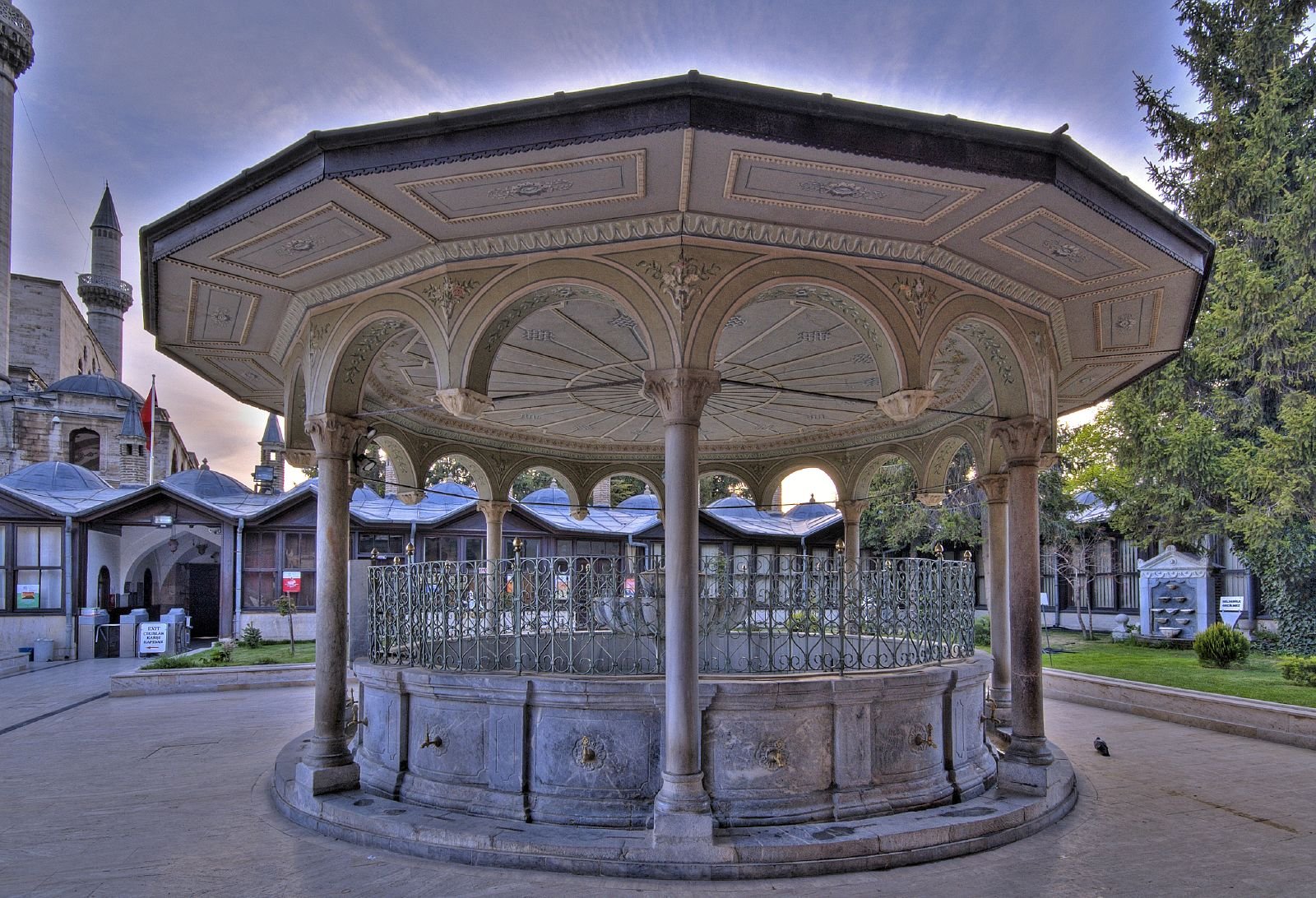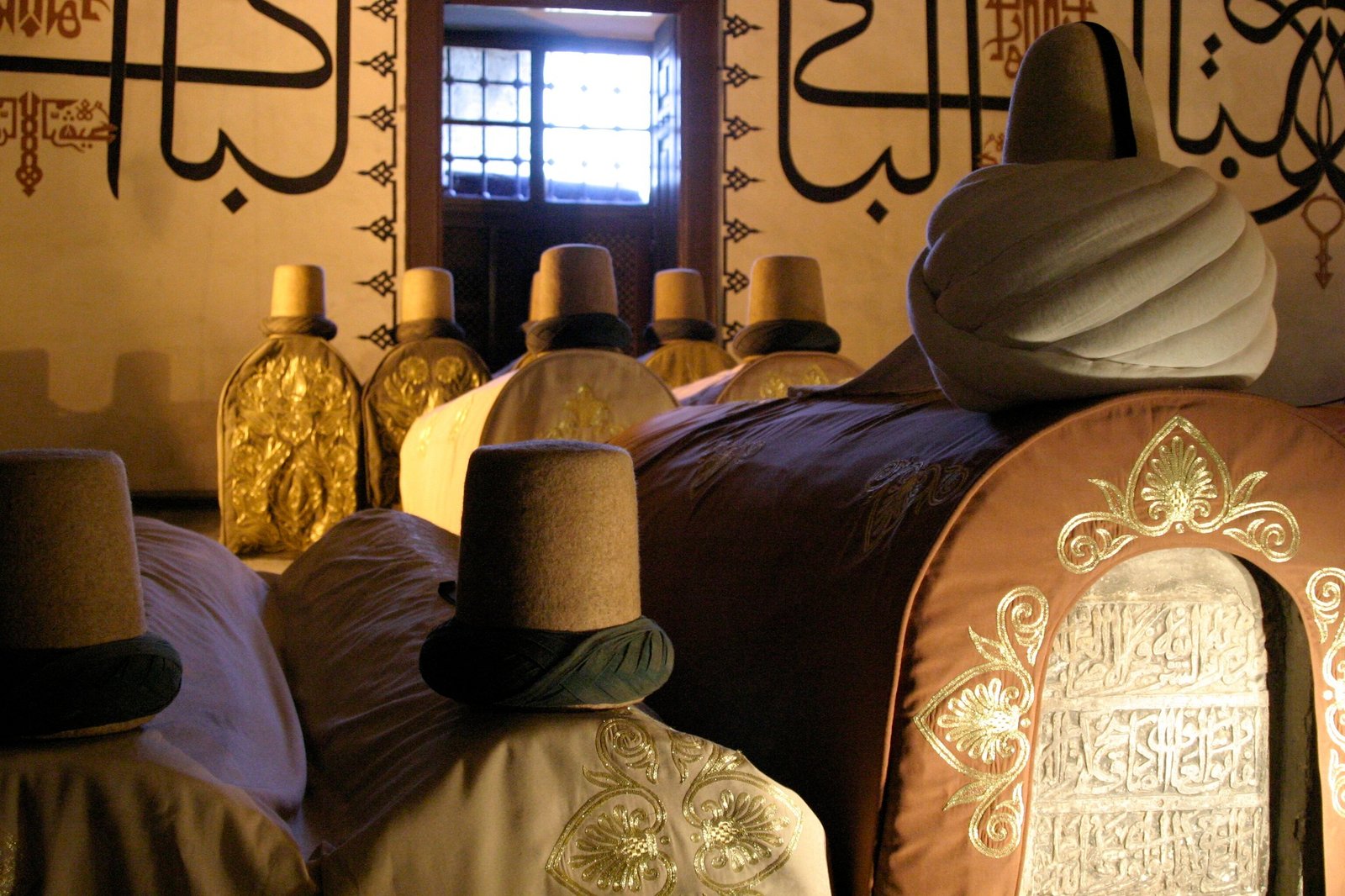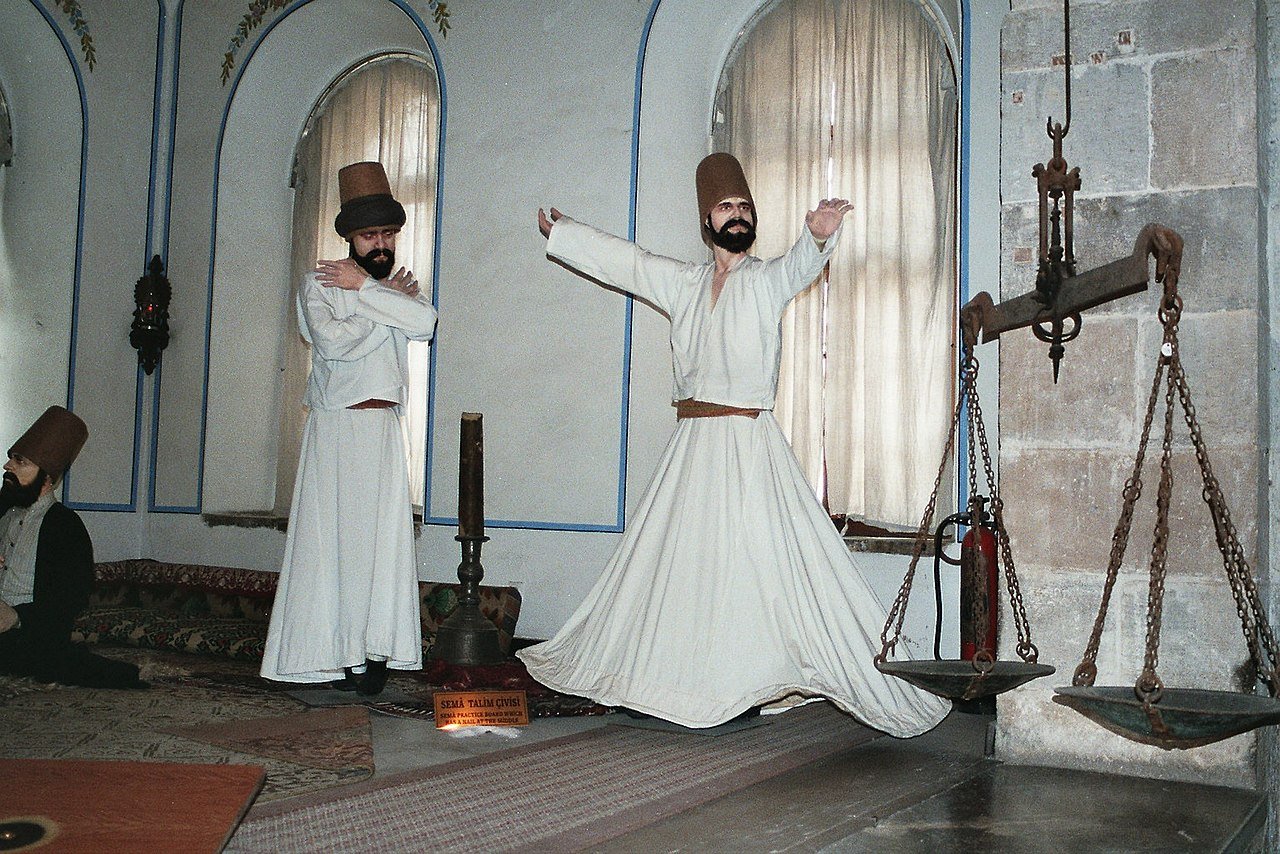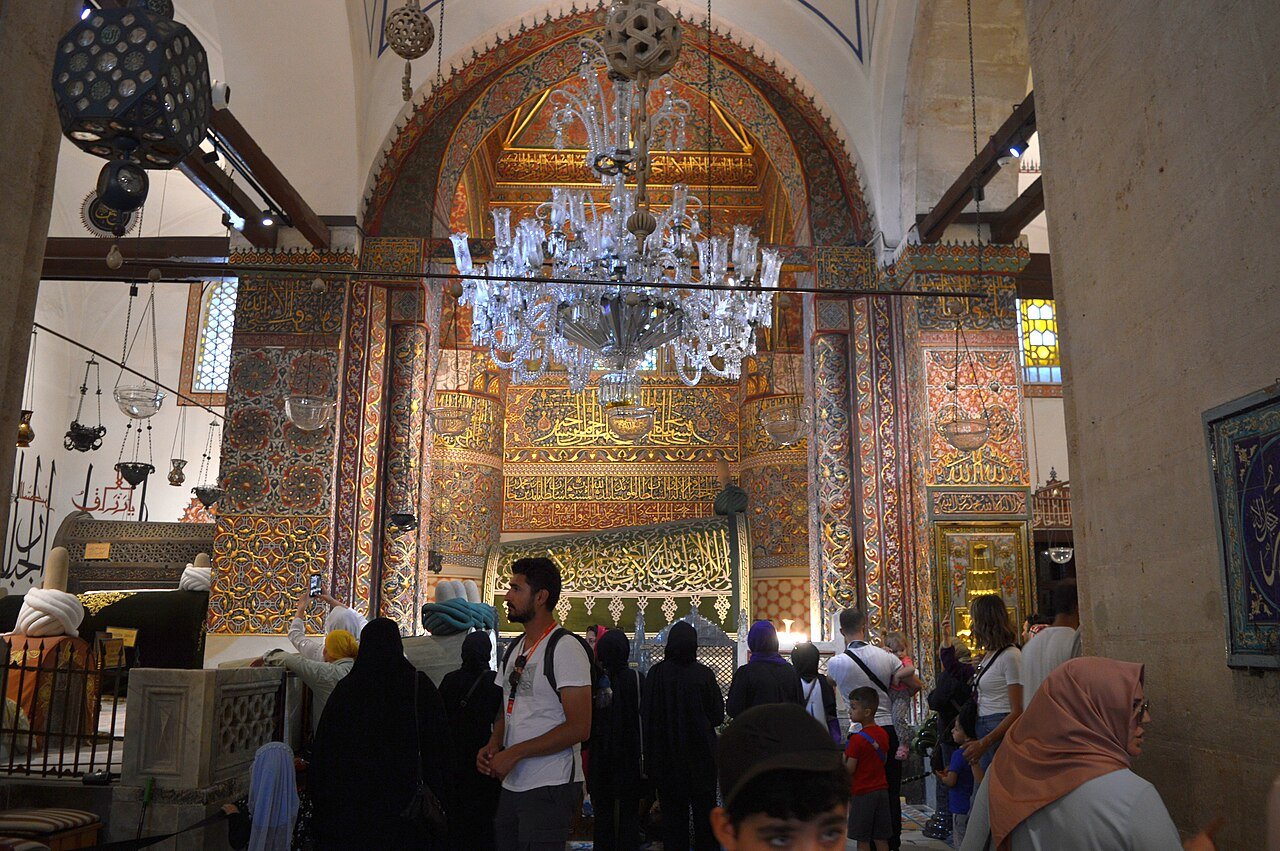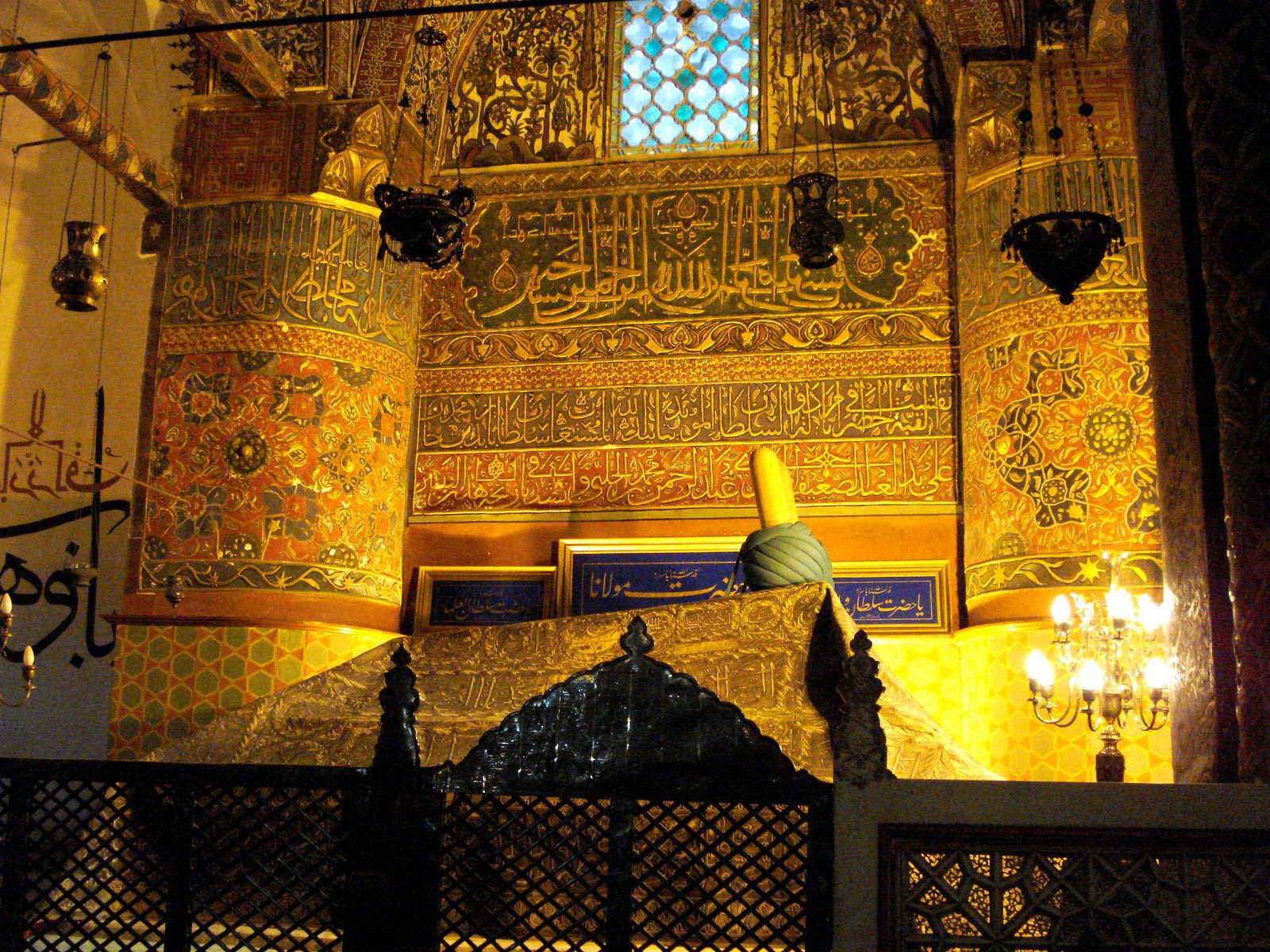Carrying the traces of Mevlâna Jalāl al-Dīn Rūmī—who throughout history became a symbol of spirituality, tolerance, and love—the Mevlâna Museum draws millions of visitors to Konya every year. Considered the heart of the Mevlevi culture, this sacred site is not just a museum but also the starting point of a spiritual journey. With its mystical atmosphere, from the tomb to the semahane, from dervish cells to rare manuscripts, every detail offers visitors a timeless experience.
What makes the Mevlâna Museum special is not only the historical artifacts it houses but also the universal messages it conveys to humanity. Mevlâna’s philosophy, which embraces all beliefs and thoughts with the call “Come, come, whoever you are,” can be felt in every corner of the museum. For this reason, visiting the Mevlâna Museum is considered not only a cultural excursion but also a meaningful stop where one turns inward.
Where is the Mevlâna Museum and How to Get There?
The Mevlâna Museum is located at Aziziye Mahallesi, Mevlana Caddesi No: 1, in the Karatay district of Konya. This historical complex welcomes its visitors in the area that includes the tomb of Mevlâna Jalāl al-Dīn Rūmī, known as the “Kubbe‑i Hadra” or Green Dome. Situated in the heart of Konya’s city center, the museum is within close proximity to urban transportation lines such as trams and buses, making it easily accessible for both tourists and local visitors.
Getting to the museum from within Konya is quite convenient. Especially from the Konya Intercity Bus Terminal (Konya Otogar), the tram line (Line 2, Mevlana station) provides direct access to the museum; after getting off at the station, a short walk (approximately 200–300 meters) will bring you to the museum entrance. Additionally, you can reach the city center from Konya Airport via Havaş shuttle or taxi, and from there, take public transportation or a short taxi ride to easily reach the Mevlâna Museum.
Mevlâna Museum Entrance Fee and Visiting Hours
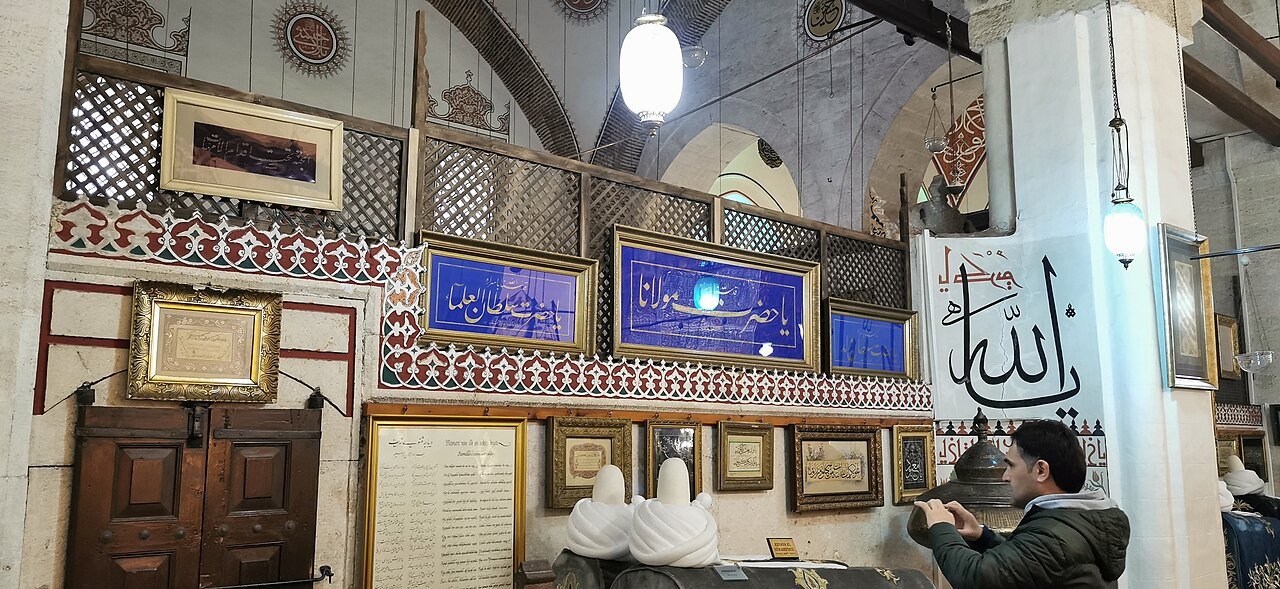
The Mevlâna Museum in Konya operates as a completely free museum that does not charge any entrance fee from visitors. Since a decision made in 2014, all visitors—regardless of whether they are local or foreign—can explore the spiritual atmosphere, tomb, and cultural artifacts related to Mevlâna Jalāl al-Dīn Rūmī free of charge. This practice aligns with the museum’s goal of spreading its universal message to wider audiences.
The Mevlâna Museum is open every day of the week, but a special schedule is applied on Mondays, the first day of the week. On Mondays, the ticket office opens at 10:00 a.m., while on other days the museum opens to visitors starting from 9:00 a.m. The closing time is generally at 4:40 p.m. Therefore, planning your visit in the morning and arriving early can help you avoid crowds and ensure a more comfortable experience.
The History of the Mevlâna Museum: When and Why Was It Established?
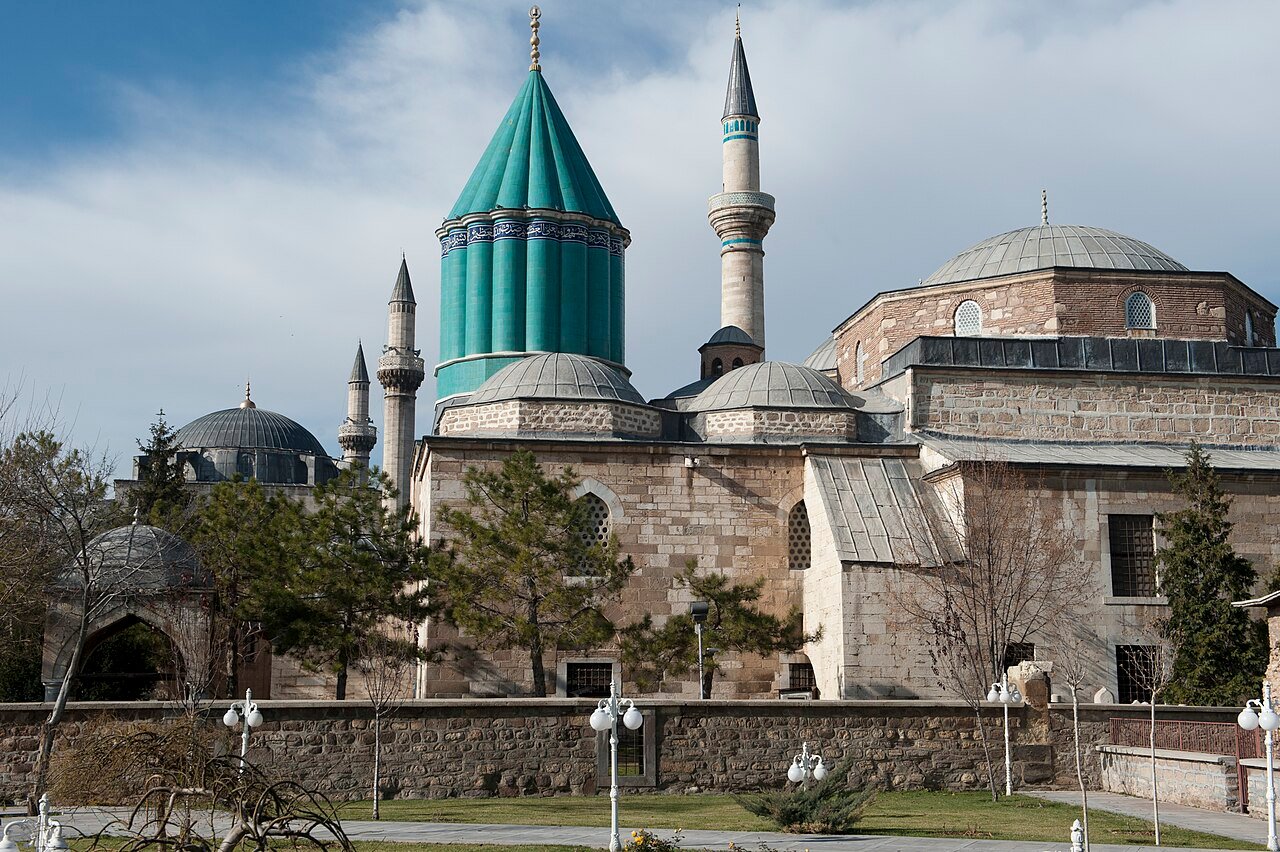
When Mevlâna Jalāl al-Dīn Rūmī passed away in Konya on December 17, 1273, his followers built a mausoleum over his grave. This construction process, initiated by Çelebi Husam al-Din, a member of the Mevlevi order, continued with the support of Sultan Veled. The tomb was completed in 1274 by the architect Badr al-Din from Tabriz. Built with financial contributions from prominent figures of the Seljuk era, such as Gürcü Hatun and Emir Alaeddin Kayser, the structure was later expanded into a larger lodge complex with additional sections such as a semahane (ritual hall), mosque, dervish cells, kitchen, and fountain.
Like other Mevlevi centers, the Mevlâna Lodge was closed and, by a decision made by Atatürk on April 6, 1926, the lodge was transformed into a museum. It was opened to the public as the “Konya Museum of Antiquities” on March 2, 1927. After being reorganized in 1954, it officially took the name Mevlâna Museum. This transformation enabled the public to connect with their spiritual heritage and allowed Mevlâna’s philosophy to reach wider audiences.
Who Was Mevlâna? A Brief Look at His Life and Teachings
Mevlâna Jalāl al-Dīn Rūmī was born in 1207 in the city of Balkh, located within today’s borders of Afghanistan. His father was Bahā’ al-Dīn Walad, a prominent religious scholar of the time. Due to the Mongol invasions, Mevlâna and his family migrated to Anatolia and settled in Konya, where he immersed himself in the fields of knowledge, Sufism, and literature. One of the major turning points in Mevlâna’s life was his meeting with the dervish Shams al-Din Tabrizi in 1244. This deep friendship profoundly influenced his thoughts and poetry, steering him toward a mystical understanding focused on love and divine affection.
Mevlâna’s teachings are rooted in tolerance, love, unity, and a human-centered understanding of Sufism. Known for the call “Come, come, whoever you are,” Mevlâna embraced people rather than dividing them, creating a spiritual atmosphere open to all regardless of religion, language, or ethnicity. His most famous work, the Masnavi, conveys the inner journey of the soul through Sufi tales and is still read worldwide. Mevlâna’s teachings are not merely religious doctrines, but a universal message of humanity.
What to See in the Mevlâna Museum? (Sections and Artifacts)
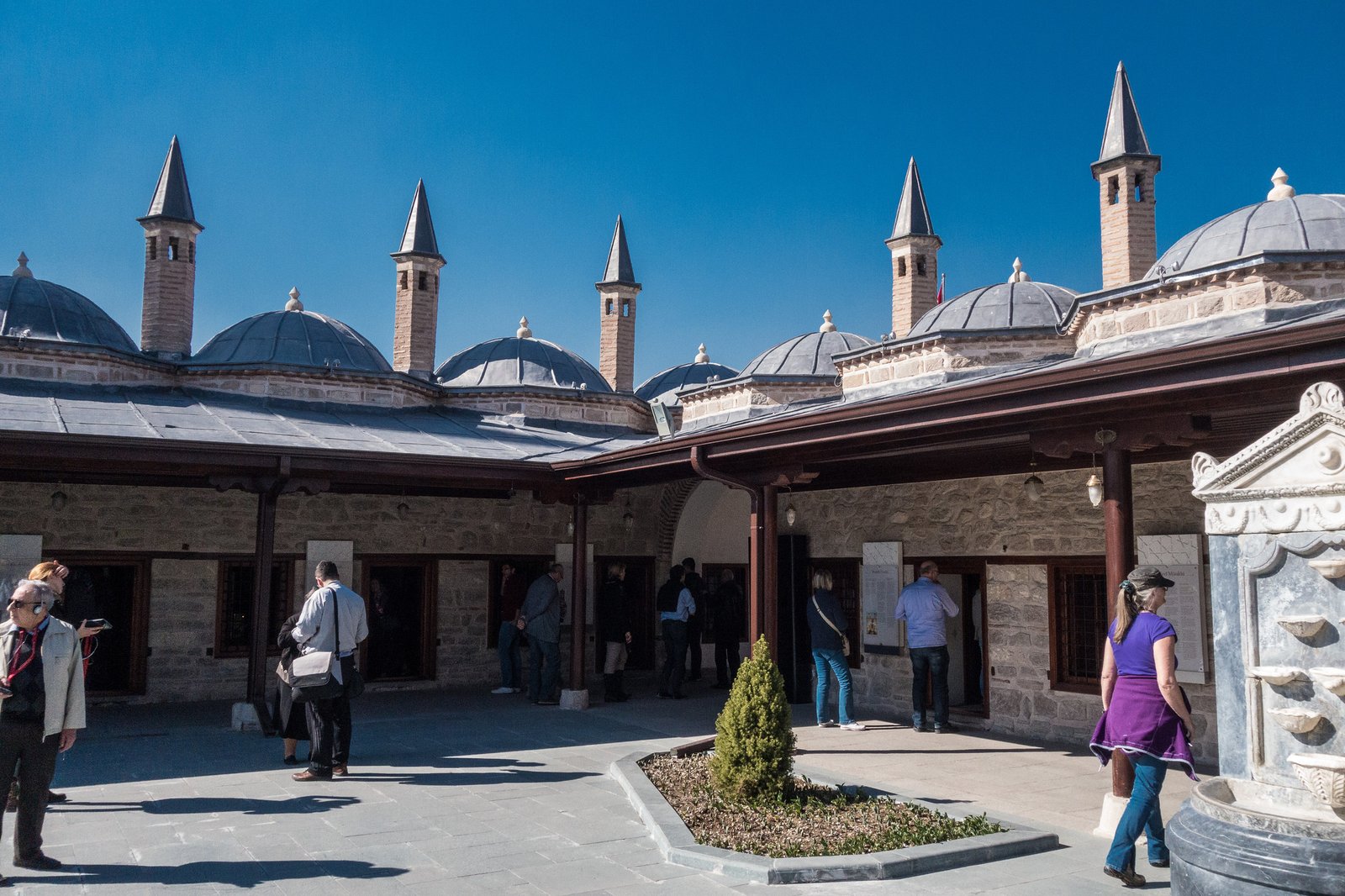
At the heart of the Mevlâna Museum lies the Tomb of Mevlâna, situated beneath the dome known as the “Green Dome.” Inside, there is a wooden sarcophagus crafted by a Seljuk master known for his refined style, including influences from Shams al-Din Tabrizi. The tomb contains the graves of Mevlâna, his father Bahā’ al-Dīn Walad, and his son Sultan Veled. The burial chamber is protected by a silver lattice adorned with examples of Ottoman calligraphy, while the dome walls feature intricately crafted muqarnas (stalactite-like architectural ornamentation).
One of the other significant sections of the museum complex is the Semahane (ritual hall). Here, musical instruments used in Mevlevi whirling ceremonies—such as the ney, kudüm, and kemane—as well as garments belonging to Mevlâna and the dervishes are on display. Rare manuscripts of the Divan‑i Kebir and various copies of the Masnavi from different years are also exhibited. The former dervish cells and kitchen areas of the lodge have been transformed into exhibition spaces featuring textiles, calligraphy, manuscripts, and objects reflecting Mevlevi lifestyle. Visitors can explore artifacts related to dervish life and learn more about Sufi culture through informative panels in these sections.
When and Where to Watch Whirling Dervish (Sema) Performances?
In Konya, whirling dervish performances (Sema) are held both in the Indoor Sema Hall within the Mevlâna Cultural Center and outdoors in the garden of the Mevlâna Museum during the summer months. Paid performances are organized every Saturday at 7:00 p.m. at the Mevlâna Cultural Center, and tickets can be purchased through platforms such as Biletinial. While the indoor hall has a seating capacity of approximately 2,650 people, the open-air area, with a capacity of around 3,000, is a more preferred alternative during the warmer season.
In addition to weekly shows held throughout the year, Sema ceremonies are also organized during the Şeb‑i Arûs (Rūmī Week) events to commemorate Mevlâna. These take place from December 7 to 17 each year in various venues such as the Mevlâna Cultural Center, the Center for Spiritual Culture (İrfan Kültür Merkezi), or near the Mevlâna Museum. During the festival, ceremonies are scheduled at different times such as 2:00 p.m., 7:00 p.m., and 8:00 p.m., and require tickets for entry. Additionally, some Sema ceremonies are occasionally held at 8:00 p.m. at the İrfan Civilization Center.
Etiquette and Rules for Visiting the Tomb of Mevlâna
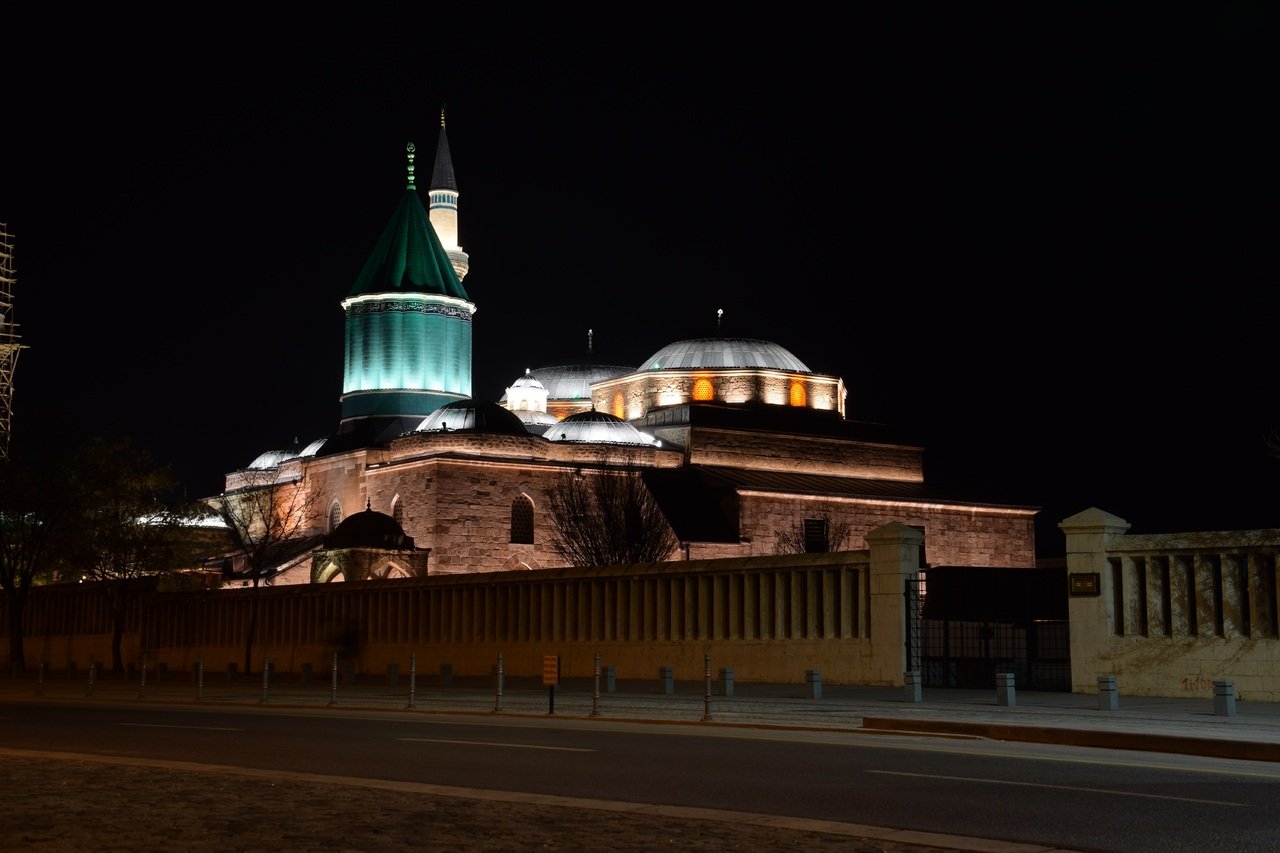
When visiting the Tomb of Mevlâna, it is essential to maintain a respectful and considerate attitude. As this sacred site holds religious significance, visitors are expected to wear modest clothing that covers the shoulders and knees, and women are advised to cover their heads. Additionally, to preserve the interior floors, wearing thin plastic shoe covers upon entry to the museum is mandatory. A generally quiet and peaceful atmosphere should be maintained throughout the visit, avoiding loud conversations or shouting. While photography is permitted, using flash should be avoided or kept to a minimum to respect the spiritual environment.
Visitors are expected to either remove their shoes or wear protective covers before entering the interior areas, and they should refrain from consuming food, engaging in noisy conversations, or displaying behavior that might disturb others. Those who wish to pray, make supplications, or show respect to Mevlâna may do so in a low voice and kneeling position, either silently or softly. However, reciting hymns loudly or playing music via radios or mobile phones is strictly prohibited. These rules of etiquette help enhance the spiritual value of the visit.
What Are the Most Popular Artifacts in the Mevlâna Museum?

One of the most striking parts of the Mevlâna Museum is the wooden sarcophagus of Mevlâna Jalāl al-Dīn Rūmī located in the main tomb area, along with the silver lattice in the burial chamber beneath and the intricate details of the dome interior. This area houses the graves of Mevlâna, his father Bahā’ al-Dīn Walad, his son Sultan Veled, and a group of dervishes known as the “Horasan Saints” who came with him to Konya. The brocade covers on the sarcophagus are among the finest examples of Ottoman calligraphy art.
The Semahane (ritual hall) within the complex is another important section that offers visitors a culturally rich experience. Musical instruments used in Mevlevi rituals such as the ney, kudüm, and kemence, along with garments belonging to Mevlâna and the dervishes, attract great interest. Also on display are Masnavi manuscripts from the 14th to 18th centuries (notably editions from 1278 and 1371) and a 1366 copy of the Divan‑i Kebir. The museum’s library houses a rare collection of over 1,700 manuscripts and 500 books, offering visitors the opportunity to better understand Sufi thought and Mevlâna’s universal philosophy.
Mevlevihane Culture and Its Living Traces in the Museum
The culture of the Mevlevihane (Mevlevi lodges) was shaped in line with Mevlâna’s teachings; it encompassed a multifaceted system of Sufism that included lodge life, whirling ceremonies (sema), remembrance rituals (dhikr), arts, and education. These structures were not just places of worship, but also centers where dervishes received both spiritual and physical training. Core values in the Mevlevihane included discipline, service, patience, and tolerance. Every dervish was required to go through a period of service, learn the sema, and study Sufi sciences. This system also fostered the development of art forms such as music, calligraphy, and marbling (ebru).
The Mevlâna Museum serves as a bridge that carries the deep-rooted culture of the Mevlevihane into the present day. Structures within the museum—such as dervish cells, the matbah (kitchen), semahane, and mescit (prayer room)—still bear the traces of Mevlevi life. The clothing, musical instruments, manuscripts, and everyday objects displayed in each section reflect what life in a lodge was like. The feelings of silence, simplicity, and spiritual peace can still be sensed in these spaces, making the museum not only a historical site but also a conscious space where the Mevlevi tradition lives on.
Is the Mevlâna Museum on the UNESCO World Heritage List?
The Mevlâna Museum is a historical complex in Konya, composed of the tomb of Mevlâna Jalāl al-Dīn Rūmī and a lodge (tekke) for Mevlevi dervishes. Originally built during the Seljuk era in the 13th century, the complex underwent various additions over the following centuries to take its current form. With architectural details that reflect Turkish-Islamic art and a deeply spiritual atmosphere, the museum is one of Turkey’s most visited cultural centers.
However, the Mevlâna Museum itself has not been individually included in the UNESCO World Heritage List. While some heritage sites in Turkey—such as the broader area titled “Konya – Capital of the Seljuk Civilization”—are recognized by UNESCO, the Mevlâna Complex has not been directly inscribed. Therefore, the Mevlâna Museum does not officially hold UNESCO World Heritage status.
Is the Saying “Come, come, whoever you are” Truly Attributed to Mevlâna?
